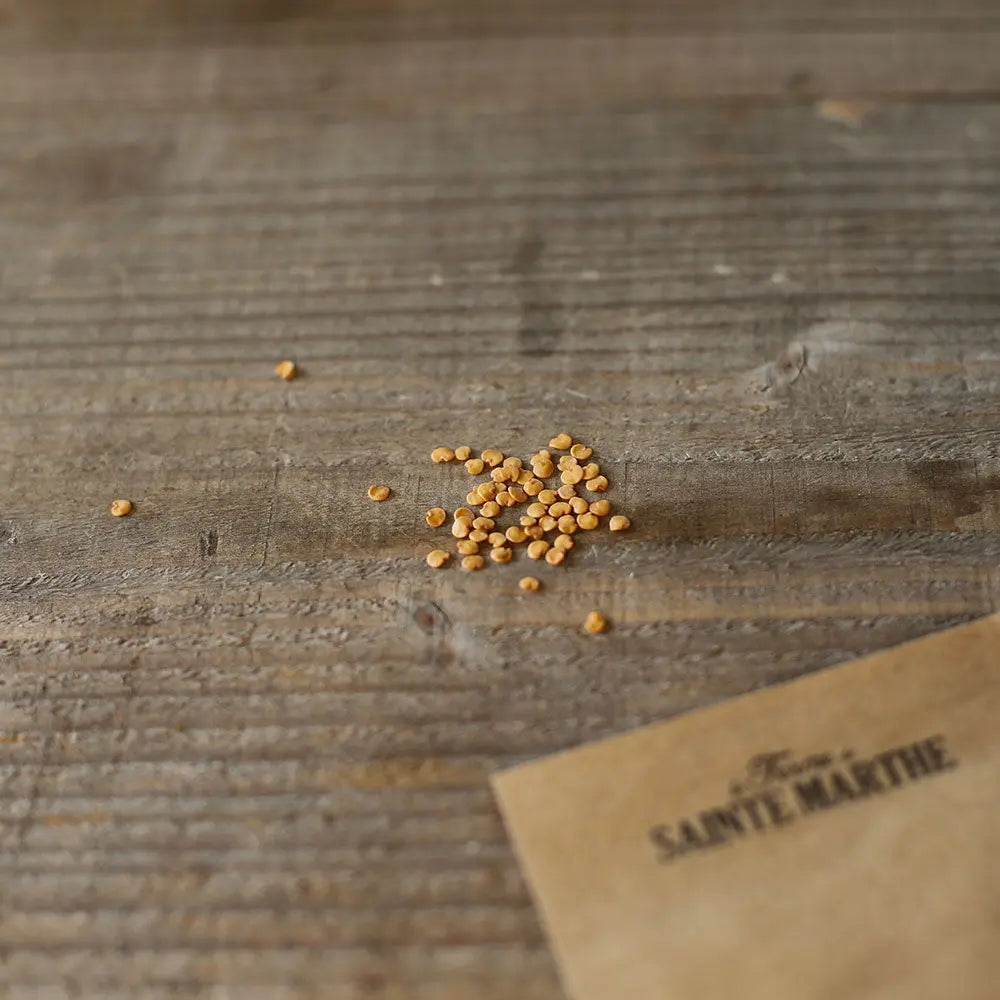MIXED EGGPLANTS (Little finger, Pusa purple cluster, Thai lavender) AB
Solanum melongena
This trio of early and productive eggplants will produce numerous fruits in clusters in a small space:
- Long purples
- Purple elongated
- Small, round , tender purple fruits with white stripes
Small in size, these fruits can easily be roasted in the oven or grilled on the barbecue, whole or simply split in half.
Composition :
- 33% Little Finger
- 33% Pusa Purple Cluster
- 34% Thai Lavender
Seeds from organic farming certified by FR BIO 01.
How to successfully sow eggplant
Sowing : in a pot of fine seed compost in March/April on a warm bed ( constant 25°C ) indoors or in a heated greenhouse. Cover the seeds with a few mm of seed compost then press down. Place your pots near a window. Water the surface lightly if the compost dries out.
Planting eggplants
Transplant the young plants measuring 15 cm into the ground at the end of May in fresh, deep, humus-rich soil with a warm, sunny exposure , 50 cm deep in all directions . Hoe, weed and hill up the eggplant plants. Water regularly at the base, prune like tomatoes. Mulch.
Good associations
You can place an eggplant crop next to bush beans .
Harvesting eggplants
You will be able to harvest your eggplants approximately 5 months after sowing .
The enemies
-
Mildew : will cause gray-green spots to appear on the leaves, while the underside will be covered with a white felt. As a preventative measure, hoeing and watering with nettle manure and horsetail tea. Before the plant flowers, or as soon as the first symptoms appear, it is also possible to treat with Bordeaux mixture .
-
Red spider mites : the leaves first become covered with gray spots before taking on a bronze appearance, then drying out and falling off. They weave webs on the leaves. Cut off the aerial parts and burn them. A treatment by spraying with black soap or nettle manure can then be considered. A plant insecticide (Anti-Aphids based on Pyrethrum) can also be used.
-
Colorado beetles : pick them by hand.
-
Aphids : attack leaves, buds, and stems. Spray with a solution of black soap or nettle manure . A biological plant insecticide, such as Pyrethrum-based Anti-Aphids , can be used in the event of a major attack.









